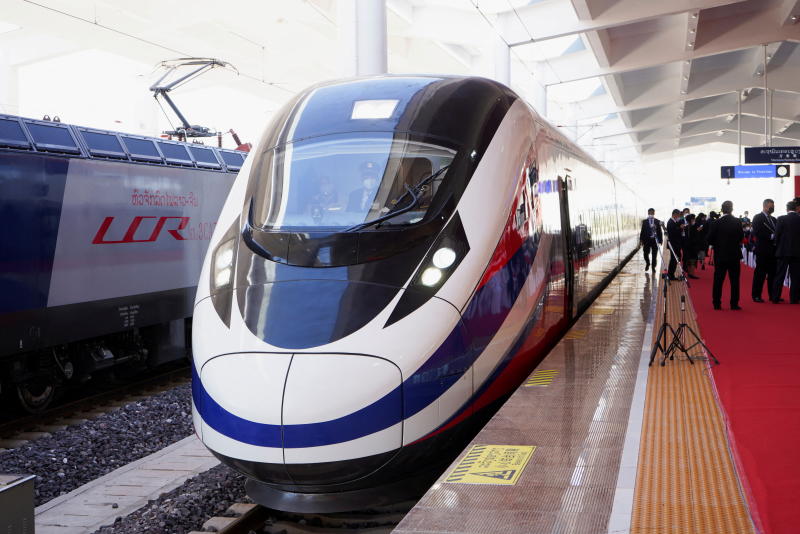
The government has said it will complete its part of a much-delayed high-speed rail system linking the country to China through Laos by 2028, with bilateral trade and economic development key benefits.
Officials pledged to finish the first of two stages to the 434 billion baht project by 2026. In total, Thailand’s segments will comprise 609 kilometres (378 miles) going from Bangkok to the northeastern border province of Nong Khai, where a bridge will be built over the Mekong River to connect with the China-Laos line, they said said at a briefing on Wednesday.
The government’s renewed commitment to the project -- first conceived in 2014 under China’s ambitious Belt and Road Initiative -- follows a meeting between Prime Minister Prayut Chano-cha and Chinese Foreign Minister Wang Yi on Tuesday.
“There were some procedural steps which have caused some delays but we’re making constant progress,” Arjaree Sriratanaban, director-general at the Department of East Asian Affairs at the Ministry of Foreign Affairs, said at a briefing in Bangkok. “The Thai government emphasises the importance of this project as we support regional connectivity.”
Laos opened a rail line in December that cost the landlocked country nearly $6 billion to link with China.
Thailand has completed 12% of the first stage, expects a test run by 2026 and the official launch the following year, according to Pichet Kunadhamraks, director-general of Department of Rail Transport. That 253km stretch, budgeted at 180 billion baht, will run from the capital to Nakhon Ratchasima province. The second section, with a price-tag of 254 billion baht for 356km, will go further northeast to the border with Laos, according to officials.
The Chinese foreign minister said at a briefing on Tuesday that the “economic corridor” connecting China, Laos and Thailand will promote logistics, trade and economic development.
The Laos and Thailand segments are seen by many as the start of infrastructure that will directly connect the world’s second-largest economy with much of Southeast Asia, including Malaysia and Singapore.







